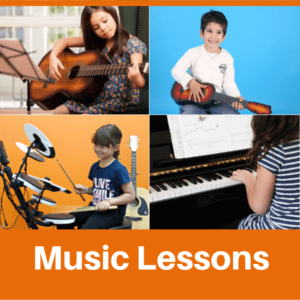
It’s important to pay close attention to what children see in the news because studies have shown that kids are more afraid of violence in news coverage than in any other media content. By creating a proper perspective and context for news and current events programs, we can help kids develop the critical thinking skills they need to understand news stories and the news industry. (http://mediasmarts.ca/)
It can be hard to get away from headlines. Everywhere we go, CP24 seems to be always running on televisions in stores and waiting rooms while convenience stores and sidewalk boxes display the front page headlines in big bold letters!
Headlines are great to sell papers, but terrible if you actually want to know what’s going on in the world. Not many of us take the time any more to read complete articles or listen to a complete newscast. Children in particular have the worst opportunity to receive the whole story; rather they pick up bits and pieces of new clips and adult conversations. Graphic photographs flash across screens and appear frequently across social media and children are often left with more questions than answers.
As parents and teachers, we must always be aware of the effect of new stories on our children and take the opportunity on a regular basis to keep conversations open while providing age-appropriate factual information, keeping the focus on the Facts, not Fear.
Here are some tips for parents and teachers to keep in mind when talking to children about the news:
-
- Don’t assume they haven’t heard about it! Kids hear everything and when they don’t hear the whole story, they are masters at using bits and pieces of information to fill in the blanks. Kids will pick up clips of headlines and hear other kids talking on the playground or asking questions in class. We need to encourage these questions so that when they need information, they are getting the right answers to their questions from adults they trust.
- Be conscious of developmental stages when talking about the news. School age children can have a lot of trouble differentiating reality from fantasy and it usually isn’t until middle school that children can independently decipher what is real and what is fiction.
- Define new words. Sometimes the scariest part of listening to the news is the words they use. Lots of children have trouble processing adult discussions effectively because they don’t know what some of the big or uncommon words mean. Don’t assume they know what everything means and make a habit of defining new words for them and asking them what words might mean so you can clarify their understanding of concepts as they arise.
- Make teachable moments part of your daily routines. When something comes up or you are with your child when they see something alarming, talk about it. Help them make connections between what they are hearing and what they already know.
- Reassure them that they are safe. Children learn what they see. As parents, we need to provide a safe and reassuring environment for our children. If we are calm, they will be more calm. They take their cues from us, in the way we act and the way we talk. When talking about the news, remind them of how closely this affects them or not and how the “adults in charge” are handling the adult problems so that kids can just focus on being kids.
- Talk about “good news” stories as often as you talk about headline news. Find opportunities daily to focus on the good things that are happening every day in our community. This reduces the focus on “big events” that are happening in the world and hijacking headlines.
- Talk about Media Literacy and teach children about the business of the news. The more they understand how headlines are used to grab people’s attention and keep them clicking through to the sites where publishers can sell ads, the more children start to realize a lot of the news is really about the value of entertainment.
- Teach children about bias and how to use their own critical thinking skills to question what they hear and to seek out accurate information. This is such an important skill and becoming one of the best survival skills of the 21st century to help filter out “fake news” and “click bait” as well as completely one-sided publications or opinions.
Having to talk to kids about the news may not be the most comfortable task but it’s truly important. We hope these tips can help make the conversation easier for adults and children alike.
To learn more about how Oak Learners is helping students stay ahead of the curve for the 21st Century, visit our Alternative School in Etobicoke for students Kindergarten through Grade Six.
For more educational posts visit our Educational Posts Page
To keep up with new blog posts you can follow us on Facebook or Instagram
Or, sign up for our newsletter below for school updates.
Get updates on new classes, hosted events, and more.










